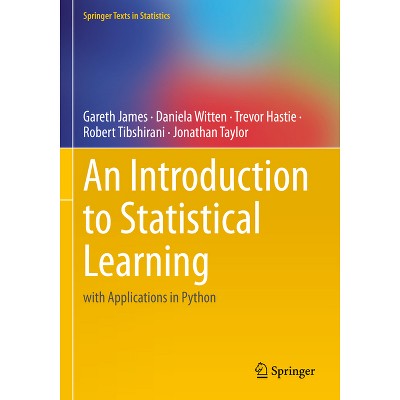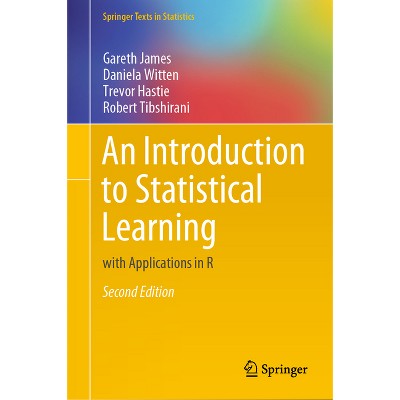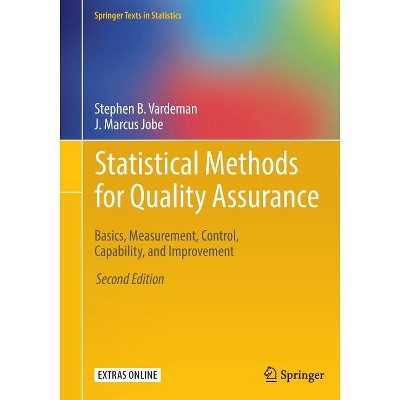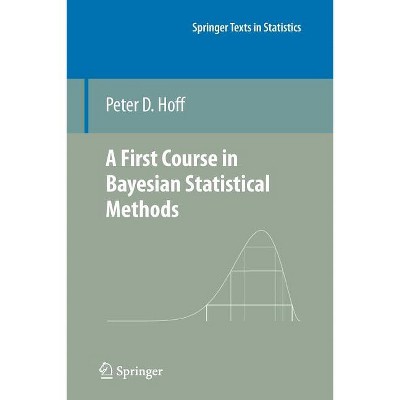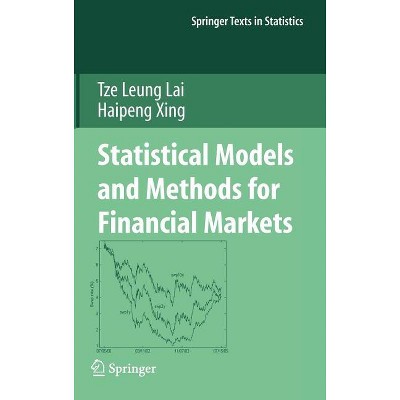Testing Statistical Hypotheses - (Springer Texts in Statistics) 4th Edition by E L Lehmann & Joseph P Romano (Hardcover)

About this item
Highlights
- The Third Edition of Testing Statistical Hypotheses brings it into consonance with the Second Edition of its companion volume on point estimation (Lehmann and Casella, 1998) to which we shall refer as TPE2.
- About the Author: E.L. Lehmann (1917 - 2009) was an American statistician and professor of statistics at the University of California, Berkeley.
- Mathematics, Probability & Statistics
- Series Name: Springer Texts in Statistics
Description
Book Synopsis
The Third Edition of Testing Statistical Hypotheses brings it into consonance with the Second Edition of its companion volume on point estimation (Lehmann and Casella, 1998) to which we shall refer as TPE2. We won't here comment on the long history of the book which is recounted in Lehmann (1997) but shall use this Preface to indicate the principal changes from the 2nd Edition. The present volume is divided into two parts. Part I (Chapters 1-10) treats small-sample theory, while Part II (Chapters 11-15) treats large-sample theory. The preface to the 2nd Edition stated that "the most important omission is an adequate treatment of optimality paralleling that given for estimation in TPE." We shall here remedy this failure by treating the di?cult topic of asymptotic optimality (in Chapter 13) together with the large-sample tools needed for this purpose (in Chapters 11 and 12). Having developed these tools, we use them in Chapter 14 to give a much fuller treatment of tests of goodness of 't than was possible in the 2nd Edition, and in Chapter 15 to provide an introduction to the bootstrap and related techniques. Various large-sample considerations that in the Second Edition were discussed in earlier chapters now have been moved to Chapter 11.From the Back Cover
Testing Statistical Hypotheses, 4th Edition updates and expands upon the classic graduate text, now a two-volume work. The first volume covers finite-sample theory, while the second volume discusses large-sample theory. A definitive resource for graduate students and researchers alike, this work grows to include new topics of current relevance. New additions include an expanded treatment of multiple hypothesis testing, a new section on extensions of the Central Limit Theorem, coverage of high-dimensional testing, expanded discussions of permutation and randomization tests, coverage of testing moment inequalities, and many new problems throughout the text.
About the Author
E.L. Lehmann (1917 - 2009) was an American statistician and professor of statistics at the University of California, Berkeley. He made significant contributions to nonparametric hypothesis testing, and he is one of the eponyms of the Lehmann-Scheffé theorem and of the Hodges-Lehmann estimator. Dr. Lehmann was a member of the National Academy of Sciences and the American Academy of Arts and Sciences, and the recipient of honorary degrees from the University of Leiden, The Netherlands and the University of Chicago. He was the author of Elements of Large-Sample Theory (Springer 1999) and Theory of Point Estimation, Second Edition (Springer 1998, with George Casella).
Joseph P. Romano has been on faculty in the Statistics Department at Stanford since 1986. Since 2007, he has held a joint professorship appointment in both Statistics and Economics. He is a coauthor of three books, as well as over 100 journal articles. Dr. Romano was named NOGLSTP's 2021 LGBTQ+ Scientist of the Year, has been a recipient of the Presidential Young Investigator Award and many other grants from the National Science Foundation, and is a Fellow of the Institute of Mathematical Statistics and of the International Association of Applied Econometrics. His research has focused on such topics as: bootstrap and resampling methods, subsampling, randomization methods, inference, optimality, large-sample theory, nonparametrics, multiple hypothesis testing, and econometrics. He has invented or co-invented a variety of new statistical methods, including subsampling and the stationary bootstrap, as well as methods for multiple hypothesis testing. These methods have been applied to such diverse fields as clinical trials, climate change, finance, and economics.
Shipping details
Return details
Trending Poetry






